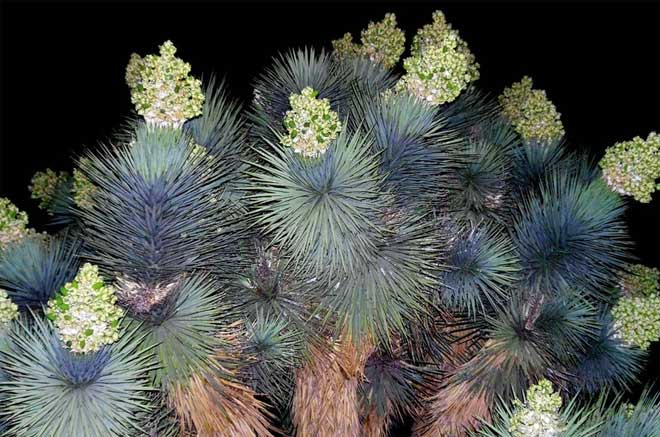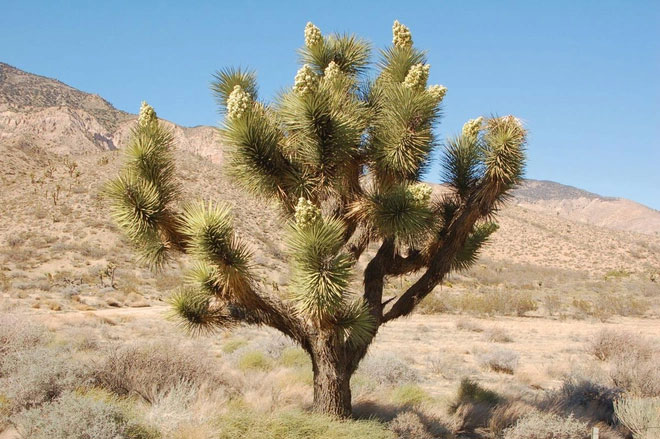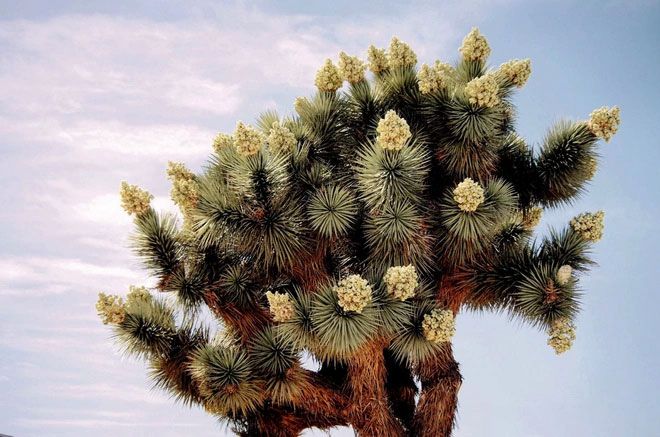In the Mojave Desert, a famous region in the United States, there exists a peculiar type of palm tree that can live for hundreds of years, with roots extending several meters deep, and blooms depending on the amount of rain during the right season.
Yucca Tree, also known as the Joshua Tree, is a species native to the Mojave Desert in the United States. This plant primarily grows at elevations ranging from 400 to 1,800 meters and is an iconic species of this renowned desert.
Stunning views in the Mojave Desert
Joshua Tree National Park is a national park located in southeastern California. It is named after the Joshua Tree (Yucca brevifolia), which originates from the Mojave Desert. Joshua Tree was designated as a national park in 1994.

Yucca Tree – a standout species of the Mojave Desert.
Originating from the desert, the Joshua Tree has sharp spines, with dark green, straight, lance-shaped leaves measuring 15 to 35 cm in length. The Joshua Tree grows at an average rate of 7.6 cm per year during its first ten years, slowing to about 3.8 cm per year thereafter. Its trunk consists of thousands of small fibers and lacks annual growth rings, making it difficult to determine the age of the tree.
This unique palm tree features a relatively heavy branching system at the top and roots that can reach up to 11 meters in length. Despite thriving in the harsh desert conditions, it can live for hundreds of years, with the tallest trees reaching heights of 15 meters. New plants can sprout from seeds, but in some populations, new growth emerges from underground rhizomes spreading around the parent tree.

Joshua Trees do not bloom frequently.
The flowers of the Yucca Tree typically appear from February to late April, forming clusters that are 30 to 55 cm long, with colors ranging from cream to greenish. The resulting fruit is brownish-green, elliptical, and contains many flat seeds.
Joshua Trees in the desert
Joshua Trees typically do not branch until they flower, and they do not bloom every year. Like most desert plants, their flowering depends on the amount of rain received during the right period. The preceding winter’s warmth or cold can also influence the Yucca Tree’s blooming.
When the flowers bloom, they are pollinated by the yucca moth. These moths spread pollen while laying their eggs inside the flowers. The larvae consume the seeds, but the plants still produce enough seeds for reproduction. The Joshua Tree is among the species predicted to experience reduced range and migration due to climate change.

This special tree can live for hundreds of years.
Native Americans, who have lived in the Southwest for generations, regarded the Joshua Tree as a valuable resource. Their ancestors used the leaves of this tree to weave sandals and baskets, the seeds and flower buds for cooking, and the red roots for dyeing.


















































